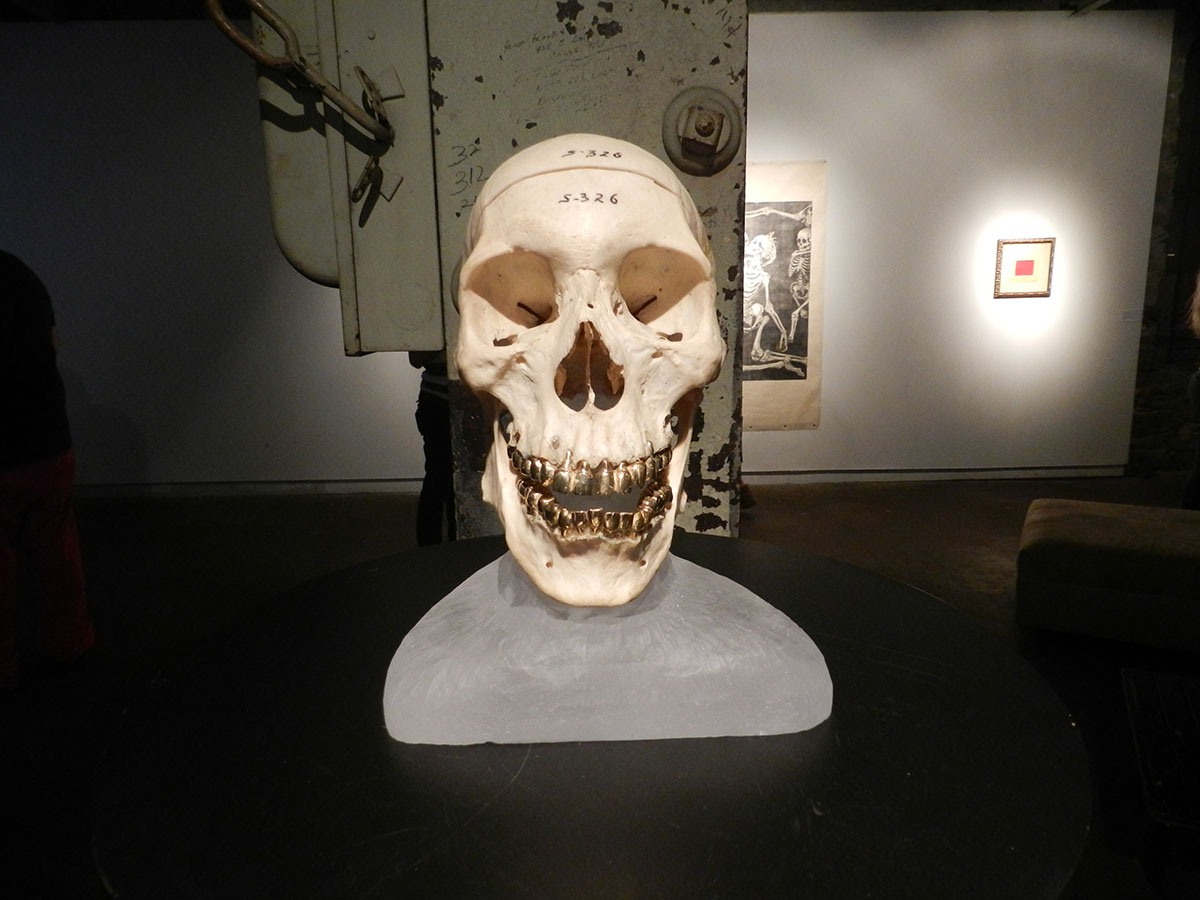Michael Dax Iacovone on Rachel Schmidt’s Forgotten Futures at Flashpoint
Five hundred years into the future, there’s just a single elephant left to tower in the concrete jungle that has engulfed his once green habitat.
That’s the prediction of artist Rachel Schmidt, a 2007 MFA graduate from MICA, who’s current show Forgotten Futures at Flashpoint Gallery in Washington D.C. showcases an impressive set of videos, sculptures and installations. All the works walk a thin line between illustrating a fable and a bleak glimpse for what could be ahead. Each of the pieces in the show is centered on a singular protagonist: the last elephant alive, five hundred years in the future.
The elephant, majestic and troubled, is displaced into modern cityscapes and the depiction is a little dystopian, but somehow not didactic. While Schmidt does ponder the ever-expanding cities, and conversely, the ever-shrinking natural settings accompanied by the extinguishing habitats and wildlife, it comes with neither warnings nor solutions. She illustrates her notions with her idealized possibilities based on a single creature.
The viewer isn’t exactly there to feel sorry for the elephant or for his or her possible role as a resident of the city, but there is a finger being pointed in that direction. On the bright side, in this fictitious world, we have neither ended the human race, nor the desire for shiny new high-rise condos. We are, however, down to one elephant, and he’s not looking too good.
The largest and most visually arresting piece in Forgotten Futures is a sculpture of an elephant lying on its side, surrounded by the mythical cityscape. The buildings come from a collection of photos Schmidt has taken both locally and from international travels, serve as ubiquitously bland facades of corporate high-rises and cookie cutter condos. The elephant’s skin, as well as the facade of the buildings, consists of collaged photos of actual elephant skin printed onto stickers covering the modular elephant-shaped armature Schmidt created.
The size of the lone elephant is larger in scale compared to its surroundings, however, the size of Schmidt’s creature is much smaller if compared to a real-life elephant of, well, the present. This play on size creates an odd emphasis on the city, and almost transforms it into proliferating fungus, in contrast with fallen pachyderm. The elephant’s pose is troubling. Is it frail, sick, or dead? Is the health of the elephant a contrast to the health of the city, or is it the canary in the coal mine? When the last elephant goes, is the city next? Or could his function shift from a monolithic spectacle to a heeded warning?
The video projected against the back wall of the gallery, titled Future Myth, is a looped film of an elephant walking away from the camera with the original jungle environment removed and replaced with a collaged cityscape. The video is visually quite busy, and the last elephant is bound to wander the urban setting that systematically replaced his. The elephant isn’t exactly displaced by the city he’s encompassed by; it reads more like a tortured assimilation, or a century long hospice.
Schmidt explains the motive behind the series. “I started by thinking about the explosive growth rate cities are currently undergoing, but what if this growth just doesn’t stop? I imagined future cities covering the planet and overtaking open spaces and forming new urban ecosystems with people and animals who have evolved under those conditions for generations.,” she said.
As a result, because Schmidt believed that elephants possess a “powerful and emotional presence,” she concluded the Asian elephant, in particular, has already been ahead of such a growing city.
“I liked the idea of exploring the hyper evolved relationship of this last and final urban elephant. But rather than telling the story as a literally translated possibility, I wanted to look at it as a myth, something distorted by telling, re-telling, memory, and fantastical realism.,” she said.
Schmidt’s interest in elephants dates back to her childhood. “I remember petting an elephant when I was a really little kid and being amazed by them,” she said. “But to be honest, I am amazed by all animals.”
“I love ecosystems and learning about the delicate habitats that all living things must balance to exist. David Attenborough is pretty much my hero. But when I found out that my proposal was accepted at Flashpoint, I knew I had to do more direct investigation with elephants.”
And last summer, Schmidt did just that. She traveled to Thailand, spent time with elephants there, and observed their interactions with their trainers. “It was an incredibly conflicting experience, intense sadness for their captivity, but unbelievably magical to just be with them. I think a lot of that comes across with the exhibit,” Schmidt said.
The show’s venue, a white box gallery in downtown Washington D.C., is hard to ignore. Schmidt’s mythical world, in actuality, addresses the area of which Flashpoint is located, placed in the epicenter of urban sprawl and rapid development. Walk out the gallery’s door and you might as well be walking in one of the artist’s cityscapes. Schmidt’s Forgotten Futures is a great show in a space known for exhibiting just that.
If possible, try to see an elephant before they’re all gone because five hundred years from now, it might be too late for that. But, hey, there’ll be brand new condos, if you have the money.
Rachel Schmidt: Forgotten Futures will be on view at Flashpoint through July 2, 2015.
Author Michael Dax Iacovone is a DC based artist who works in photo, video, maps and installation.









